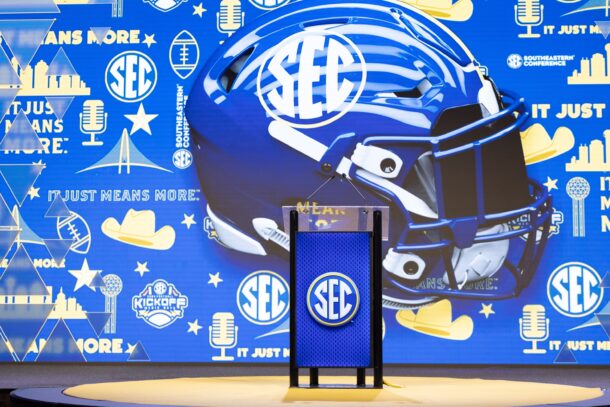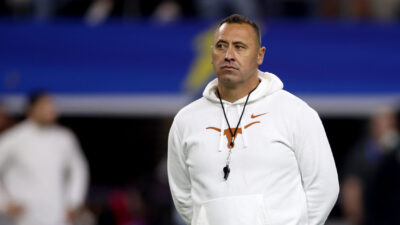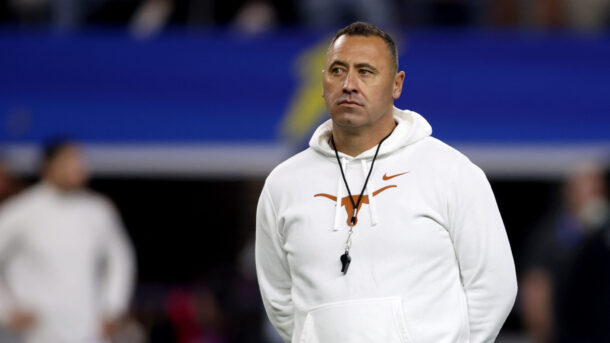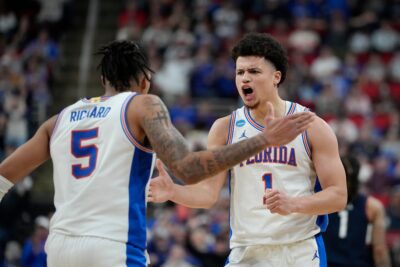Ad Disclosure

You look at all the numbers between LSU and Arkansas and you come to the conclusion that, really, LSU should have a slight edge against the Razorbacks with that edge offset a little by the fact that this weekend’s meeting is at Fayeteville.
But then you read the numbers over the last two years.
One sees a 17-8 LSU record the past two years and a 9-7 SEC record while, in those same two years, Arkansas has been 15-11 and 7-9. But in the two LSU-Arkansas games in those two seasons, the scores total: Arkansas 48, LSU 14, and two wins for the Razorbacks.
Call it the Alabama hangover for LSU. Or maybe it’s just that Arkansas has LSU’s number. Whatever it is, you might want to take it into consideration when you look at the matchups below, then adjust it with a slight nudge towards the Razorbacks’ side:
When LSU has the ball
LSU QB Danny Etling vs. Arkansas pass defense: When LSU wins, Etling is pretty good. In the first three games under interim head coach Ed Orgeron, his numbers were good enough to make him second in the SEC in pass efficiency if projected over the whole season.

But in the losses … let’s say there’s a huge difference. Against Auburn, he was 15-for-27 for 117 yards with a touchdown. Against Alabama, he was 11-for-24 for 92 yards with a pick. That’s 209 passing yards in his two losses as the starting quarterback.
Where does that project Etling against Arkansas? It’s hard to predict. Arkansas is a middle-of-the-pack team in terms of pass defense, allowing 208.8 yards per game, seventh in the SEC. The Razorbacks are also middling when it comes to generating pressure with 18 sacks, 4.0 from Jeremiah Ledbetter and 3.5 from Deatrich Wise.
Arkansas’ front seven is not Alabama’s, which didn’t allow Etling the time to set up and throw. But Etling is also not Chad Kelly or Austin Allen. Arkansas has seen bigger challenges. LSU is 13th in the SEC in passing and 11th in efficiency, far more modest numbers than Arkansas’ pass defense.
EDGE: Arkansas
LSU run offense vs. Arkansas run defense: Let’s face it, Arkansas is not Alabama when it comes to stuffing the run as Auburn, which rolled up 543 rushing yards on the Hogs in a 56-3 rout, can attest to. In fact, nobody in the SEC gives up more yards per carry than the 6.1 yards the Razorbacks allow.
But let’s also face this: Arkansas has been more physical against LSU the last two years. And the Tigers showed some serious flaws in its run-blocking for Leonard Fournette last week in a 10-0 loss to Alabama as the Tigers managed just 125 total yards
Still, the Tigers still average a league-best 6.2 yards per carry, and Fournette, even if he rushes for just 35 yards on 17 carries against Alabama, is still Fournette.
The best bet for Etling and the LSU pass game is the offensive line gets its act together and opens up holes for Fournette and Derrius Guice, thus creating openings in the pass game. And the league’s best per-carry rush average (LSU) vs. the league’s worst per-carry rush defense (Arkansas) says there’s a good chance of that happening.
EDGE: LSU
LSU receivers vs. Arkansas secondary: One of the storylines of LSU’s offensive struggles that doesn’t get talked about a lot is the struggles of the wide receivers. Travin Dural established himself as a rising star in 2014 and hasn’t ever taken the next step as his numbers this year (25 receptions, 249 yards, 1 touchdown) attest. It’s a similar story for Malachi Dupre (26, 305, 2 TDs), who was the rising star coming off of last year but has had middling success this time around.
And the latest in that cycle is D.J. Chark, who is becoming relevant this year (19 receptions for a team-high 314 yards and a team-high 3 TDs), but will he be the guy who finally takes that next step?
And is it the receivers not getting it done, or is it poor quarterback play?
Whatever the case, they will go against an Arkansas secondary led by a couple of pretty good Louisianians in Henre’ Toliver (two interceptions) and Santos Ramirez (34 tackles, 1 interception), who got the slow-play treatment in recruiting from LSU and, thus, opted to go north for college. They will be highly motivated to outplay Louisiana receivers they have, frankly, been better than anyway.
EDGE: Arkansas
When Arkansas has the ball
QB Austin Allen vs. LSU pass defense: When the season began, Ole Miss’ Chad Kelly was clearly the best returning quarterback in an SEC that went through some serious QB attrition after 2015. After him, returning starters with middling numbers — like Tennessee’s Joshua Dobbs and LSU’s Brandon Harris — were generally considered the next best QBs in line.

In other words, the league was ripe for more new stars to emerge at the position, and along with Jalen Hurts at Alabama and Sean White at Auburn, Allen has been one of the bright new stars, with 2,291 passing yards and 19 touchdowns vs. 8 interceptions.
One can argue that he’s the best passer in the league aside from Kelly, and with Kelly now out for the season with a knee injury, he might be the best thing going in the SEC.
He will be challenged by an LSU secondary that’s fourth in the league in both pass defense (196.9 yards per game) and pass efficiency defense. The Tigers are good on the back end and generate pressure with 21 sacks. Arkansas does not protect well, allowing 22 sacks, second-worst in the SEC behind only South Carolina.
If Arden Key and LSU’s pass rush can get to Allen at all, he could be in for the below-average passing day that quarterbacks like Kelly, Hurts and Missouri’s Drew Lock experienced against LSU (by their standards).
EDGE: LSU
Arkansas run offense vs. LSU run defense: One area where Arkansas has dropped off in recent years has been in the running game. The Razorbacks are ninth in the league at 167.3 yards per game and their 4.1 yards per carry is second-worst in the league ahead of only South Carolina.
But they have found a good centerpiece back in Rawleigh Williams (955 yards on 179 carries), who is second in the SEC behind only Kamryn Pettway of Auburn. His 5.3 yards per carry outpace his team average by a good bit.
But this is no ordinary run defense he’s up against.
LSU is second in the SEC in rush defense behind one of the league’s most dynamic pairs of linebackers in Kendell Beckwith (an SEC-best 10.6 tackles a game) and Duke Riley (fourth at 8.5 per game). The defensive line gets penetration, and Beckwith and Riley clean plays up.
It’s going to be tough sledding for the Razorbacks to run on LSU, and if they can’t establish some nice gains and instead put the offense in 2nd- or 3rd-and-long, then sacks on Allen might really make the run statistics ugly in this one.
EDGE: LSU
Arkansas receivers vs. LSU secondary: Drew Morgan (48 receptions, 515 yards, 3 TDs) was a 2-star recruit coming out of high school but now finds himself fourth in the SEC in receptions per game and has managed to make himself a go-to guy for one of the league’s rising stars at quarterback.
Add in big-play threats Jared Cornelius (24, 465, 4 TDs) and Keon Hatcher (29, 441, 5 TDs), and Allen has some solid receivers to throw to. And that doesn’t even take into account the contributions of tight end Jeremy Sprinkle (23, 266, 4).
Allen has plenty of reliable targets. The good news for LSU is it probably feels it can match up with any one of them with the Tigers’ talented array of secondary players, starting with cornerbacks Tre’Davious White and Kevin Toliver, to nickel and dime backs Donte Jackson and Dwayne Thomas as well as safety Jamal Adams.
The Tigers are fourth in the SEC in pass defense and pass efficiency, but they lead the league in fewest passing touchdowns allowed (four).
EDGE: LSU
Special Teams
Arkansas has found something in Adam McFain, the kicker who hasn’t missed yet, going 5-for-5 in field goals and 11-for-11 in PATs since taking over the starting job from Cole Hedlund. He’s been more reliable than LSU’s Colby Delahoussaye, who has had three kicks blocked and missed two other field goals.
In punting, Arkansas’ Toby Baker has a better average than LSU’s Josh Growden (44.8 vs. 42.5), but Growden has been better at pinning teams inside their 20 (14 times vs. two touchbacks in 40 punts vs. 13 times vs. three touchbacks in 40 punts for Baker).
LSU has been better at both returning and covering kicks and punts. So this is a close matchup, but the consistency of McFain, plus LSU’s alarming tendency to have kicks blocked, gives Arkansas an edge.
EDGE: Arkansas




